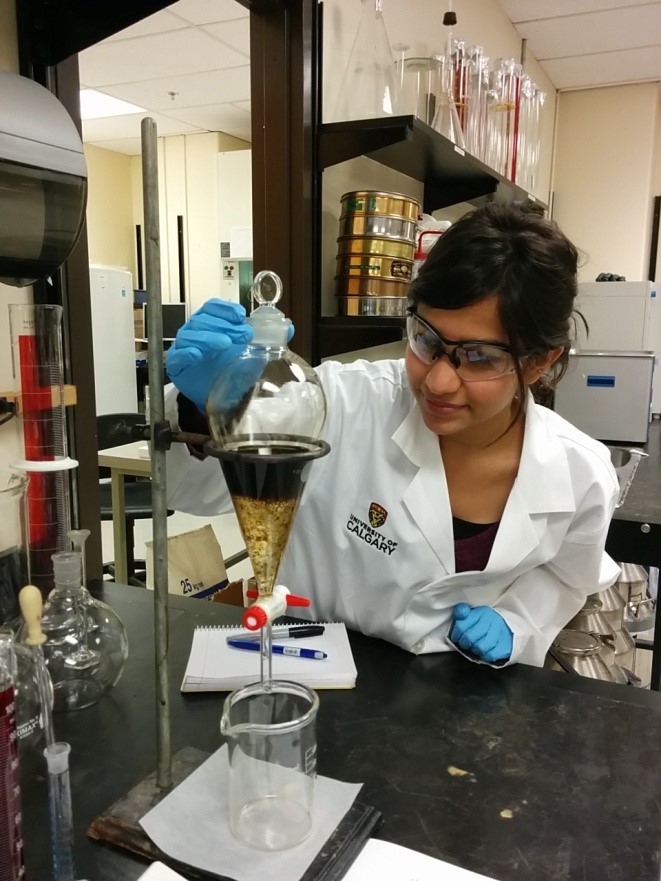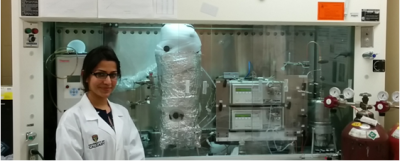
Aprami Jaggi, C-IMAGE Student of the Month, November 2014

Aprami Jaggi is a PhD student studying the partitioning behavior of xenobiotic compounds typically found in oil releases in seawater. She is a student of Steven Larter’s and Thomas Oldenburg’s out of the University of Calgary’s Petroleum Reservoir Group. She was asked two questions about her research and her daily activities.
Big Picture
1) What is your research project and why is it important and relevant to the GoM?

My dissertation research is focussed on the study of the partitioning behaviour of xenobiotic compounds into seawater systems. Xenobiotic compounds are exogenous chemical species (not normally synthesized by an organism) which have the potential to instigate acute or chronic toxicity in organisms, even causing death in extreme cases. Such compounds are found majorly within petroleum and its release in the environment typically follows accidental spillage. The unprecedented quantity of oil released during the blowout of the Macondo well, 2010 Deepwater Horizon oil spill, led to an increased interest in the environmental fate of crude oil xenobiotics.
I aim to experimentally determine the partitioning behavior of water soluble oil components using live oils (methane-charged) with saline waters over a varying range of pressure and temperature, as seen along the depth of the water column. This data will aid in near-field and far-field distribution modeling of the environmental fate of crude oil components of interest (BTEX, phenols and other compounds which might be observed using FTICR-MS and LC-MS technologies) and assist in the prediction of component migration pathways from potential oil spills.
2) What are you doing today?
Today, I am conducting bench top experiments using the oil from the DWH spill (Source Oil B) to form emulsions with water. I will be analyzing the variation of emulsion separation times with the change in temperature and composition of brine. Further, I will analyze the separated water for the presence of hydrocarbon and non-hydrocarbon species (oil constituents partitioning into the water) using GC-MS and FTICR-MS. The data will provide useful information about a broader range of oil components (and hopefully some less volatile compounds which are less affected by lab procedures) to extent the partitioning behavior knowledge to a larger group of xenobiotics.
The GC-MS provides useful information about the structure and concentration of low molecular mass species (especially hydrocarbons) that partition into the water. FTICR-MS technology provides a much more comprehensive analysis of partitioning oil components into the water, especially species containing polar functional groups including compounds of higher molecular mass.
Thank you, Aprami!!! Next month we’ll talk to another C-IMAGE student about his/her research… Stay tuned!


